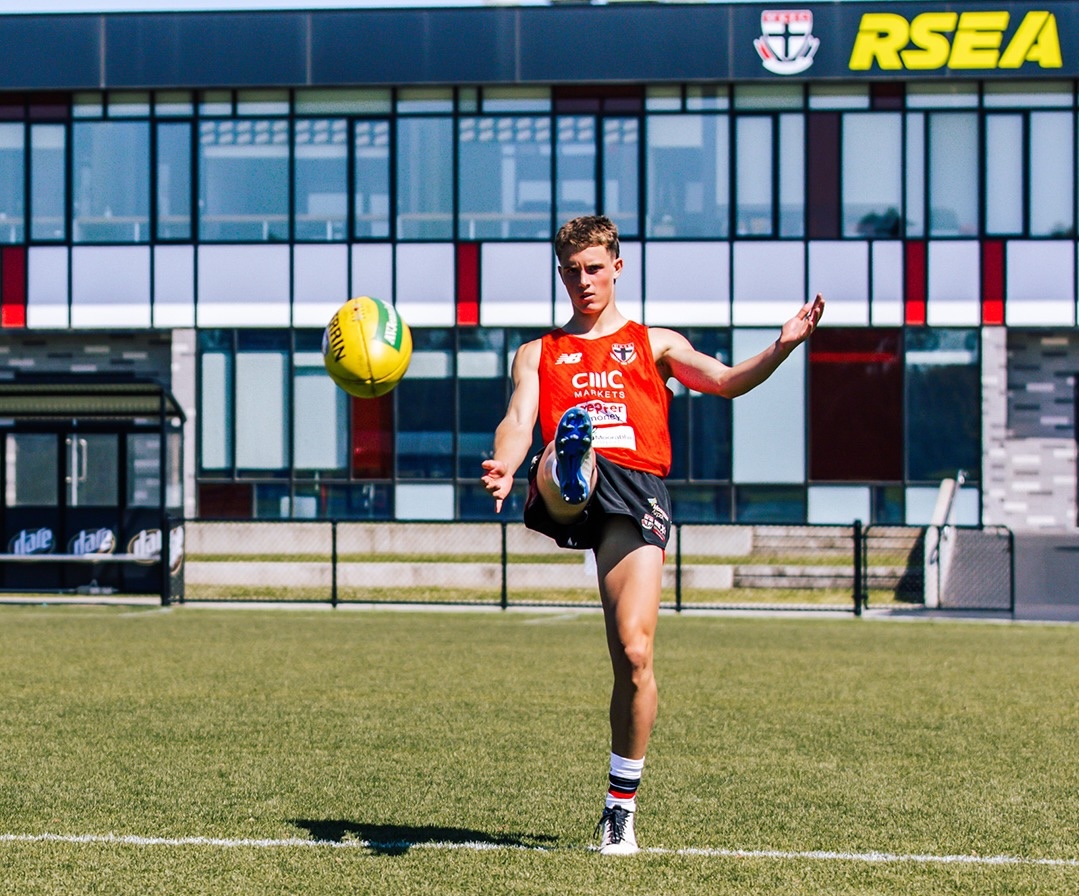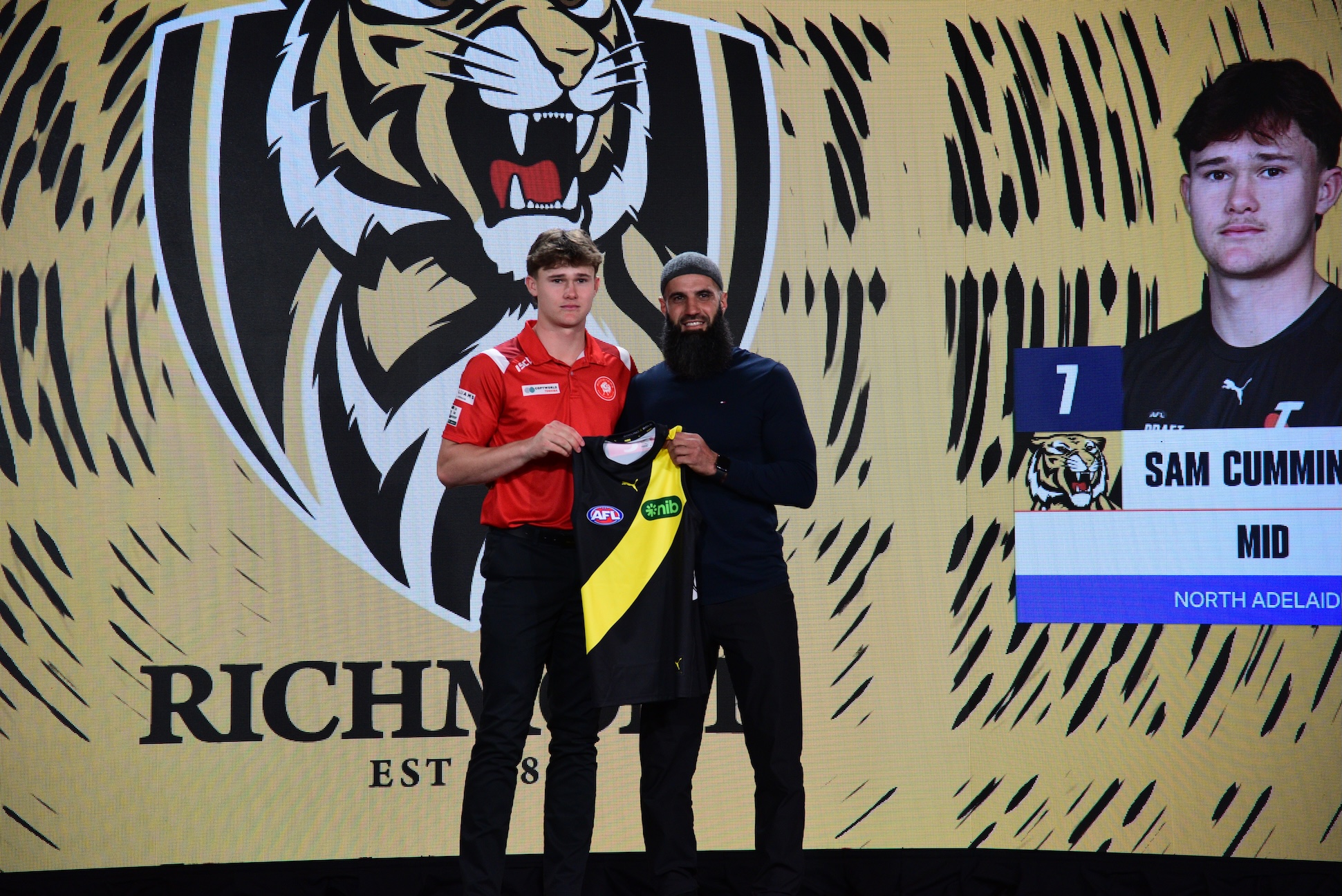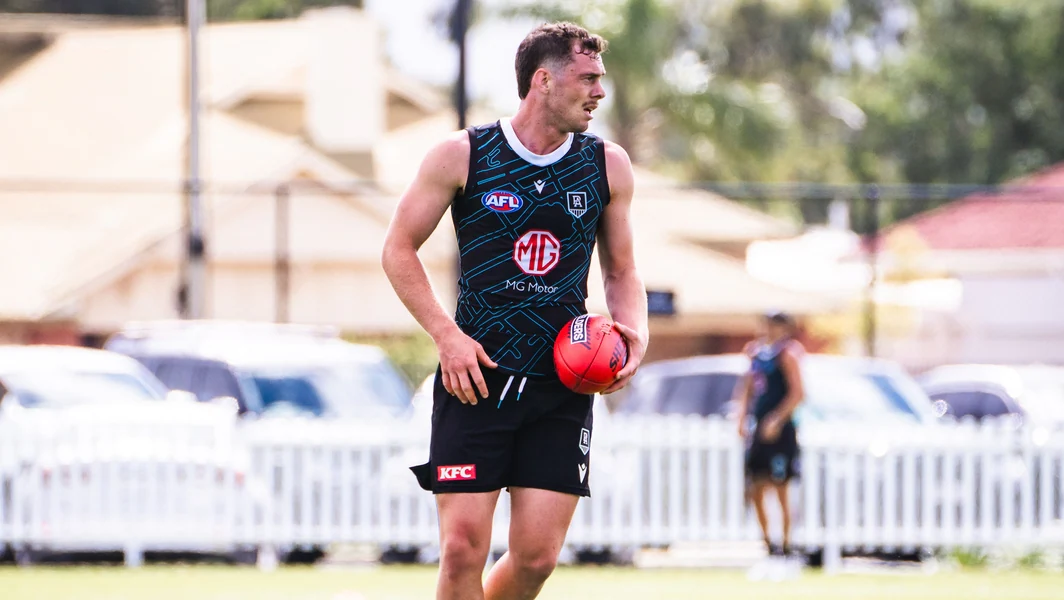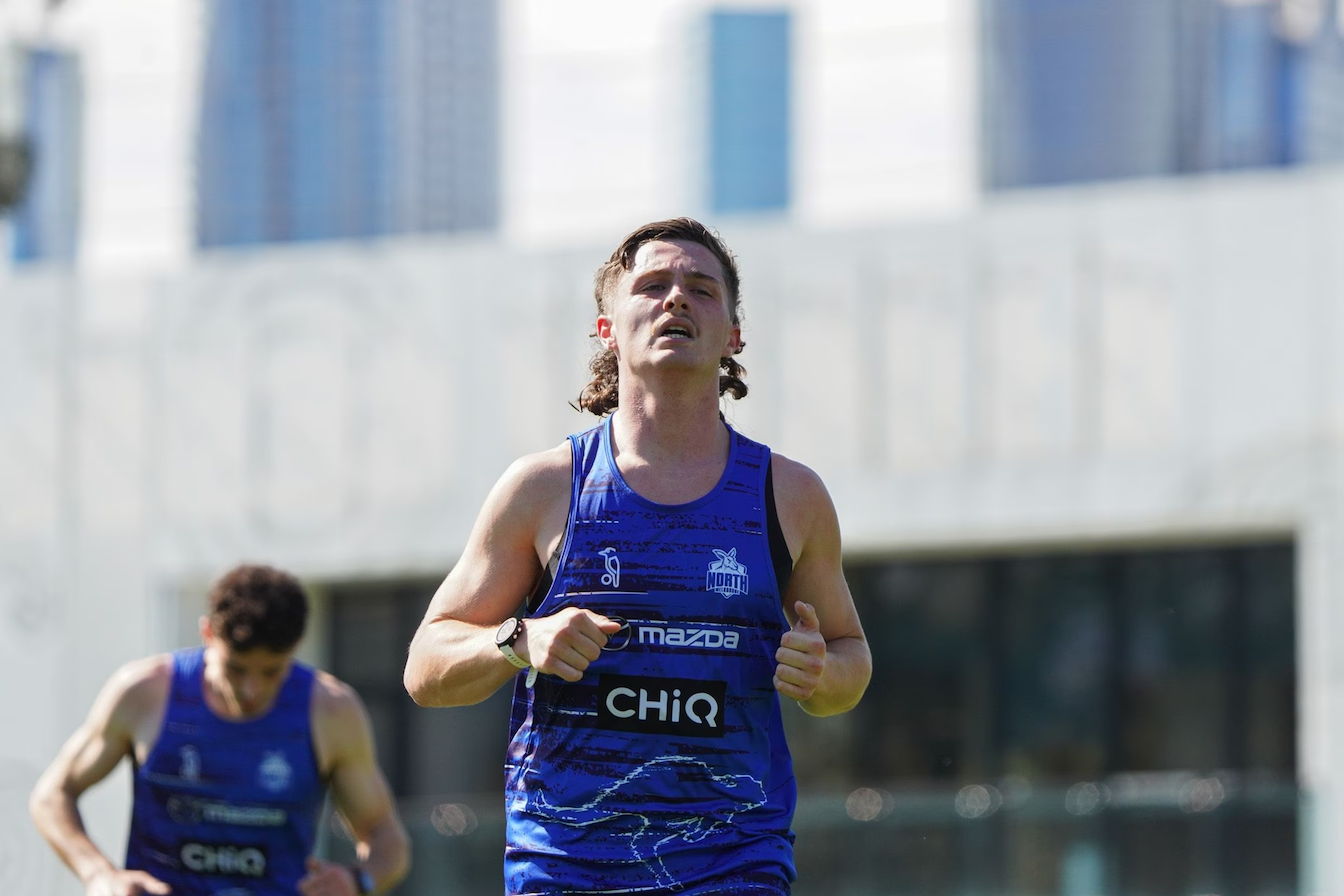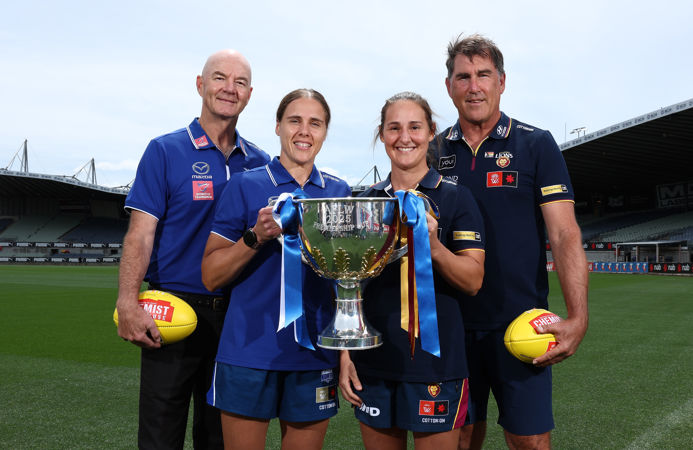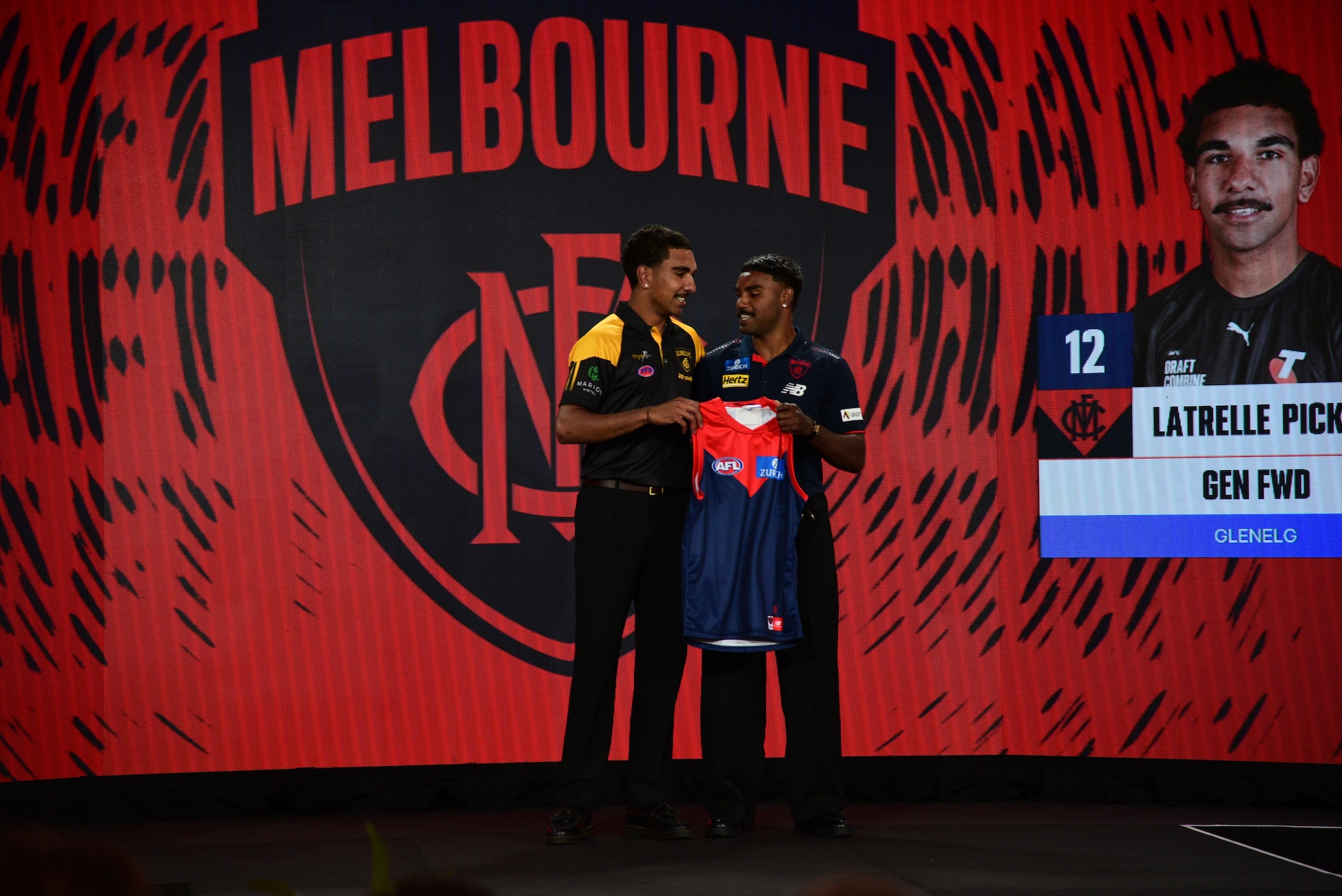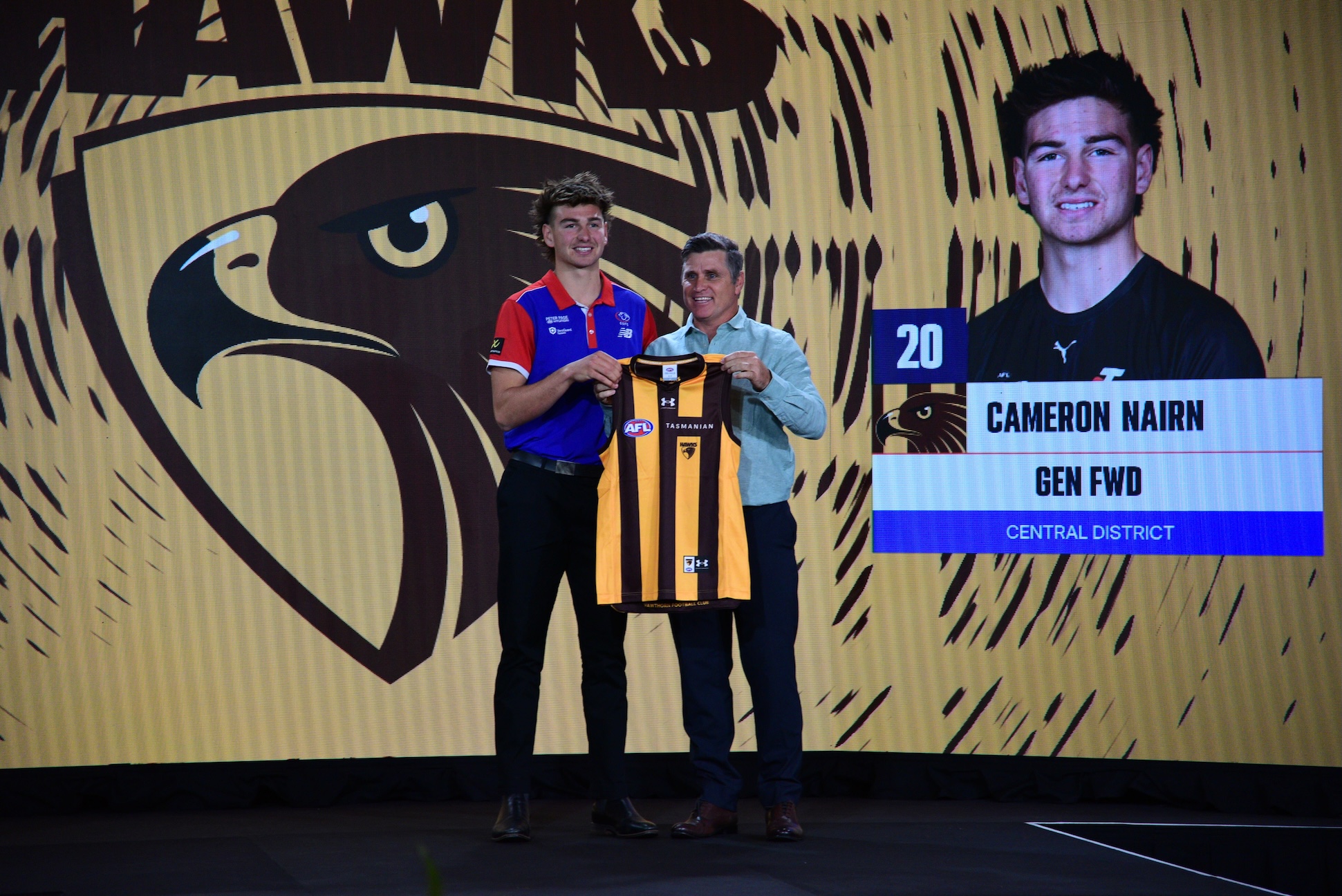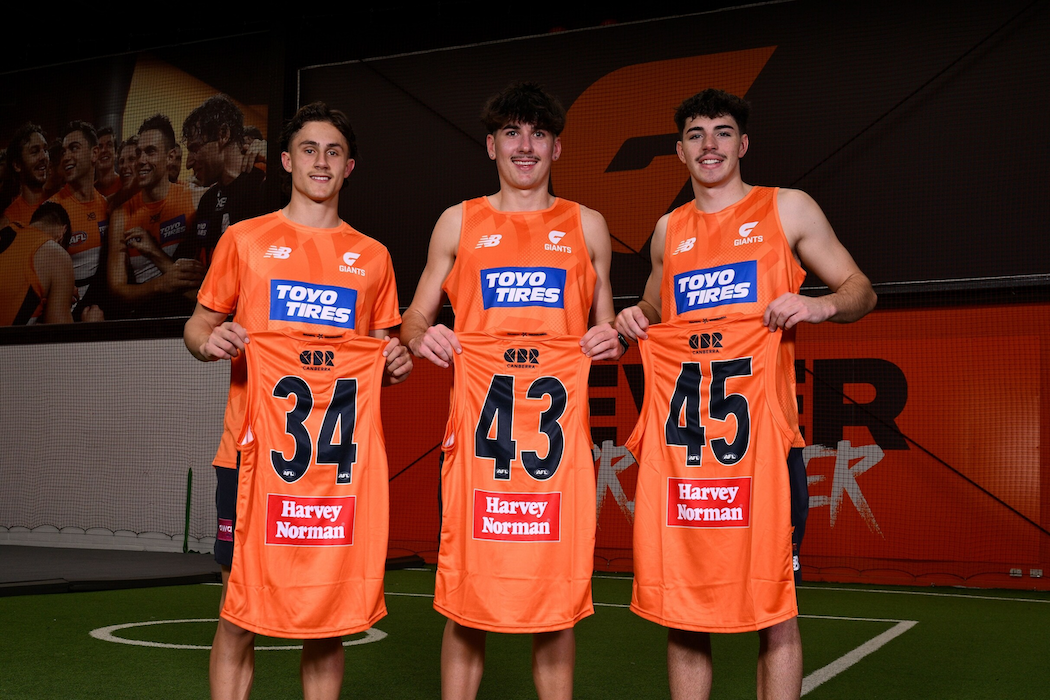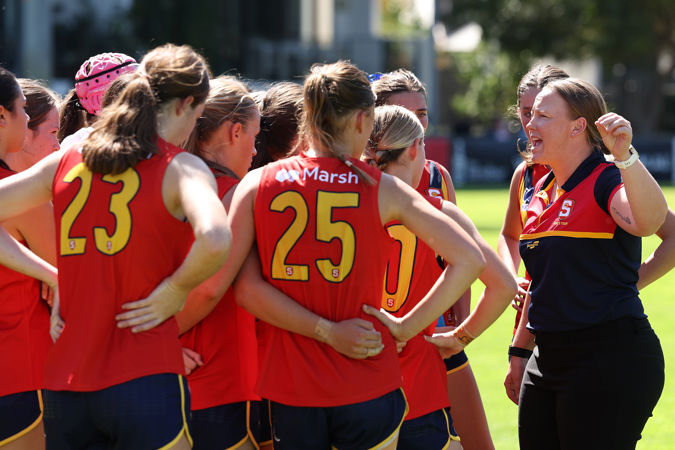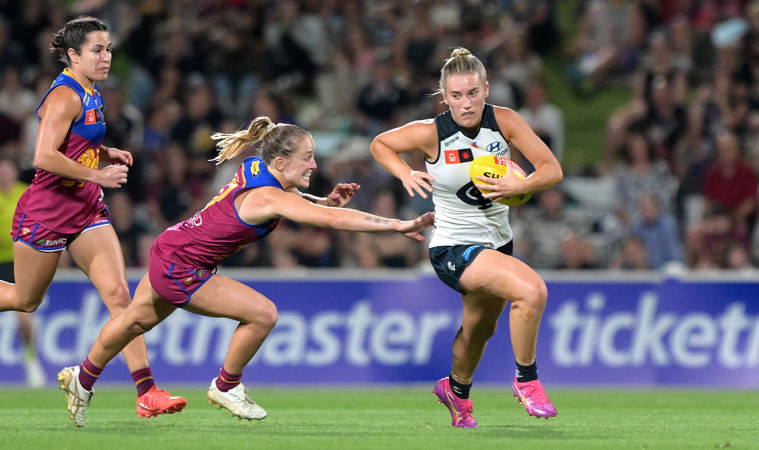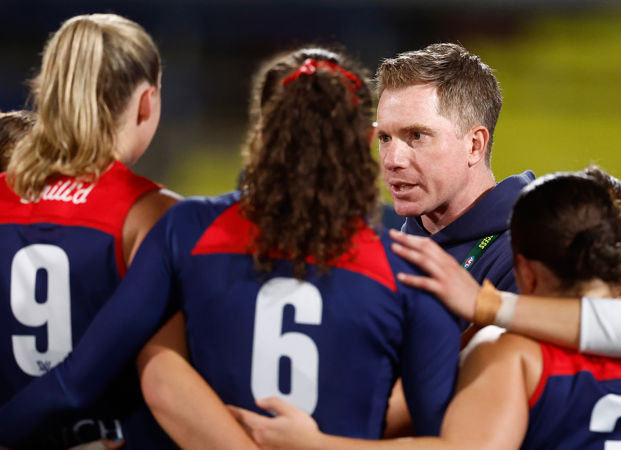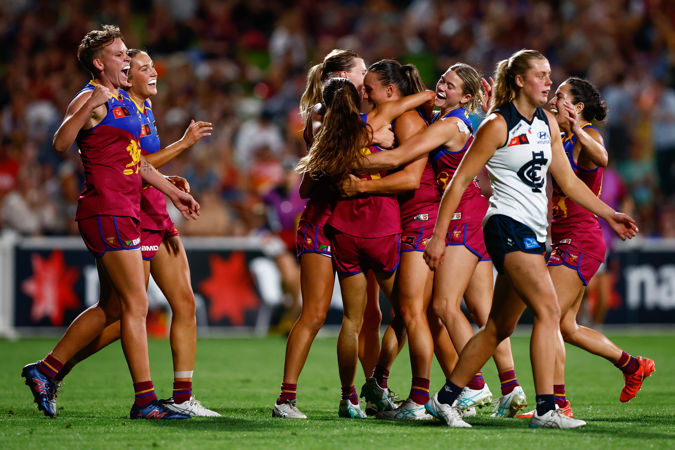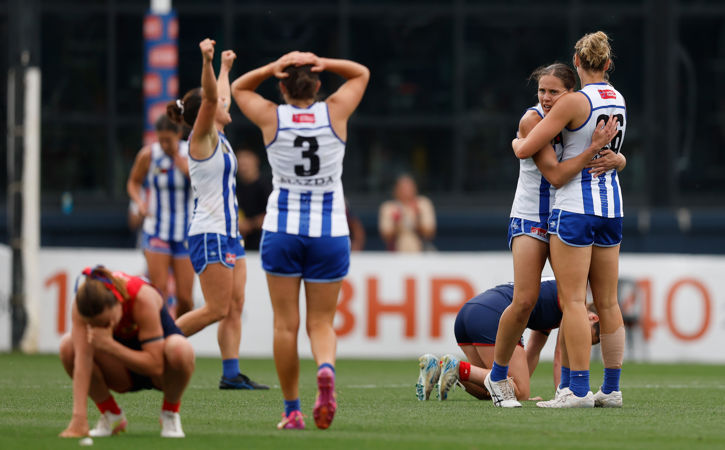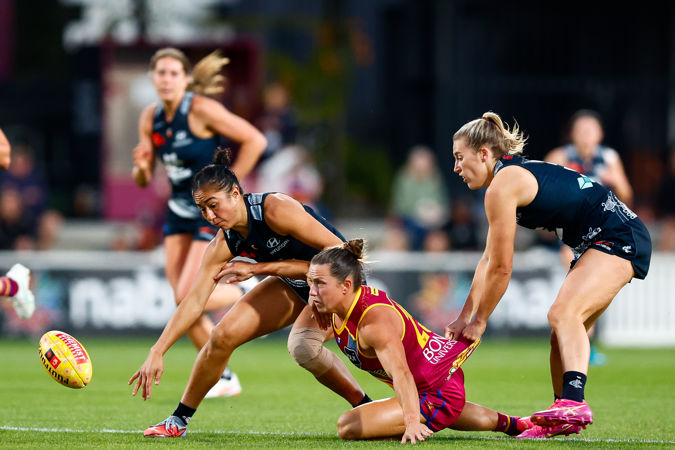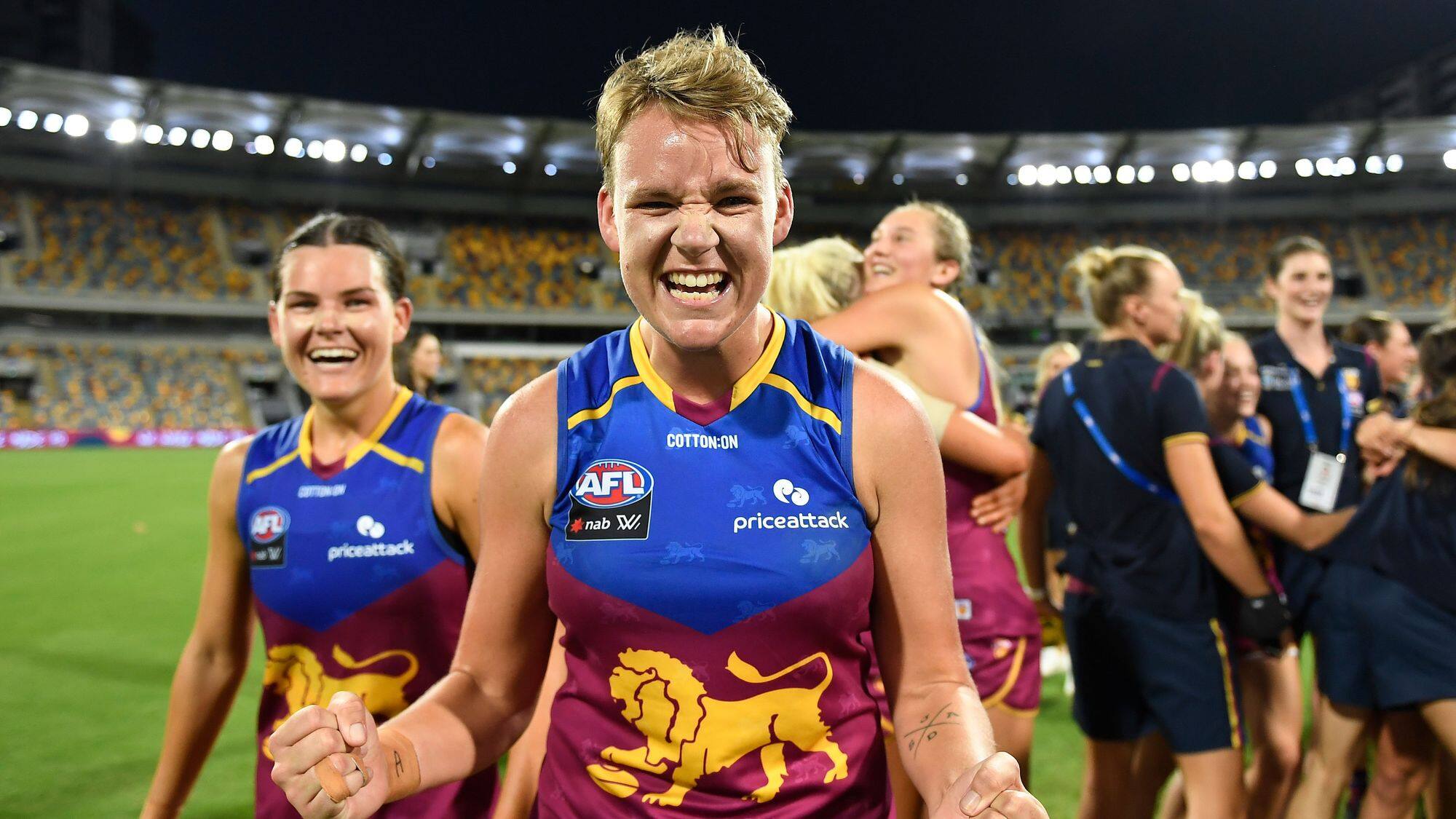BRISBANE faces the toughest AFL Women’s Season 7 fixture according to Rookie Me Central’s club-by-club analysis. In calculating the difficulty of each individual club’s fixture based on the opponent – and whether the match was in the club’s home state or interstate – the Lions were calculated to have the most difficult fixture of all 18 clubs. Reigning premiers Adelaide was also clear of the rest, while Hawthorn and the Western Bulldogs, recorded the lowest fixture difficulty.
FIXTURE DIFFICULTY VALUE POINTS: (as opponent)
5 (+1 interstate) – Adelaide, Brisbane, Melbourne
4 (+1 interstate) – Collingwood, Fremantle, North Melbourne
3 (+1 interstate) – Essendon, Gold Coast, GWS GIANTS, Port Adelaide, Western Bulldogs
2 (+1 interstate/Geelong) – Carlton, Geelong, Richmond
1 (+1 interstate) – Hawthorn, St Kilda, Sydney West Coast
Effectively what the above means that when a side plays Adelaide in South Australia (with the exception of Port Adelaide) then that value is worth six points, compared to playing Adelaide in that club’s home state, where it is worth five points. In the case of Geelong, we also awarded an additional point of difficulty playing the Cats at GMHBA Stadium as the other Victorian club with a dedicated, consistent stadium.
The expansion clubs were difficult to calculate given there is little known about them, but Essendon and Port Adelaide have recruited more readymade experience and are believed to challenge the existing clubs so were awarded a three-point difficulty, with less-experienced outfits Hawthorn and Sydney receiving one-point of difficulty. The difficulty factor was otherwise based on ladder position, with the Blues moving down based on the outgoing players, and the Tigers – who finished on the same amount of wins as St Kilda – moving up a rung into the two-point difficulty.
CLUB-BY-CLUB FIXTURE DIFFICULTY:
#1 BRISBANE | 39 points
Brisbane comes in as the club with the clearly most difficult fixture, and while part of that is because the Lions do play half of their games interstate (therefore picking up plus-one multipliers), they do not have any one-point matches. In fact, the Lions’ Round 4 trip to Casey Fields is the most difficult part of the fixture, with back-to-back five-point games in Rounds 7-8 with an away trek to take on North Melbourne, before a home clash against the Crows. The easiest match they have is in Round 9 when they tak on Hawthorn down in Frankston, valued at two points.
First half difficulty (average): 4.0
Second half difficulty (average): 3.8
#2 ADELAIDE | 37 points
The reigning premier should have a difficult draw, so it is no surprise to see the Crows near the top of the list. They open with the grand final rematch against Melbourne yielding them five points, and have three of their first four matches being four points or more on difficulty. A Round 8 trip away against the Lions looks to be the biggest challenge in an easier run home to the finals, before a nicer last fortnight, playing Geelong at home and then travelling to face St Kilda at Moorabbin.
First half difficulty (average): 4.0
Second half difficulty (average): 3.4
#3 (eq.) NORTH MELBOURNE | 35 points
Another title contender, North Melbourne does not have it easy in its Season 7, ranking the highest of the Victorian clubs. Given the Roos finished the second highest of that data set last season, it should be somewhat expected to cop a more difficult draw. The Roos’ first half is more difficult than their second half, though that is largely due to back-to-back tough matches with Melbourne at ETU Stadium in Round 2 and then travelling to Adelaide in Round 3. Another tough home game against the Lions in Round 7, as well as a clash with Collingwood, and they take on four of the other top six clubs in Season 7.
First half difficulty (average): 3.8
Second half difficulty (average): 3.2
#3 (eq.) WEST COAST | 35 points
The first inequality in the fixture difficulty is that of the Eagles, who finished last in Season 6, but cop the equal third worst draw. Again like Brisbane and Adelaide, West Coast do have to travel every second week, but even so they have received a draw that will be quite a test for the side that won one game last season. The Eagles do not play any of the one-point sides at home, and even finish with a trip to Casey Fields in the final round of the season, but their first half of the draw – which sees them head to Queensland (Gold Coast) and New South Wales (GWS GIANTS) will see them jet-setting to all different states early.
First half difficulty (average): 3.8
Second half difficulty (average): 3.2
#5 (eq.) MELBOURNE | 34 points
One point behind those sides are the Demons, with the reigning grand finalists getting off a little lighter compared to those around them, but still have a challenging draw at times. Unlike all the sides above them, Melbourne has two one-point opponents in St Kilda (Round 3) and West Coast (Round 10), as well as two-point side Carlton in Round 5. That is balanced out by some tough contests including a roadtrip back to Adelaide to take on the Crows in Round 1, as well as two five-point games in Rounds 4 and 6 against Brisbane (home) and Fremantle (away).
First half difficulty (average): 3.6
Second half difficulty (average): 3.2
#5 (eq.) CARLTON | 34 points
Carlton is another one who faces a tough draw considering what might lay ahead given the losses over the off-season. The Blues finished strongly, but have still dealt a rough draw all things considered, though it is largely lob-sided. The first half of the draw (Rounds 1-5) is a nightmarek, with three or more point valued sides, including games against Fremantle (away) and Melbourne (home) in Rounds 4-5. Averaging four points of difficulty in that first half, if the Blues can pick up a couple of wins, then they can build up a similar momentum, to last season, playing lower ranked sides in the run home, including St Kilda and Richmond back-to-back in Rounds 7-8.
First half difficulty (average): 4.0
Second half difficulty (average): 2.8
#5 (eq.) SYDNEY | 34 points
This is rough. In a counter contrast to Carlton, expansion side Sydney come in equal fifth for fixture difficulty despite clearly being the most inexperienced side in the competition. The Swans might mathematically have an easier start in Round 1 by hosting the Saints, but then still take on Collingwood in Round 2 and Port Adelaide away in Round 4. It does not get any easier in the run home, with three or more point opponents, including North Melbourne (away) and Fremantle (home). The Swans will likely be the favourite for the wooden spoon, and this draw certainly does not help, but hopefully the red and whites can defy the odds.
First half difficulty (average): 3.0
Second half difficulty (average): 3.8
#8 COLLINGWOOD | 33 points
The Magpies round out the top eight in fixture difficulty, and realistically they should be there given they reached the Final 6 last season. They did crawl to the line as the walking wounded, and will have their challenges without some quality players available. In terms of their draw, the Magpies need to get the wins on the board early, with five of the first six rounds featuring three-point or less opponents. That includes Carlton and Sydney in the opening fortnight, and St Kilda in Round 6, though the Magpies also have to host the Crows in Round 4 which is a tough ask. Then comes the nightmare last three weeks for the Magpies when they travel west to take on the Dockers, host North Melbourne then have to head north to take on the Lions. Ouch.
First half difficulty (average): 2.8
Second half difficulty (average): 3.8
#9 (eq.) GWS GIANTS | 32 points
Always one of the hardest teams to judge as to where they might finish, the GIANTS have ended up like they have on most ladders, around the middle of the table. Coming in at ninth, the GIANTS have a fixture that is more difficult in the opening five rounds, though it is weighted by a home clash against Brisbane in Round 2, then a road trip to take on the Crows in Round 5. It does get easier in the second half of the season with only a clash against Collingwood in Round 7 rating higher than three points, and the GIANTS do have a couple of one-point games against West Coast (Round 4) and Hawthorn (Round 8) at home.
First half difficulty (average): 3.6
Second half difficulty (average): 2.8
#9 (eq.) ST KILDA | 32 points
Similar to West Coast, St Kilda is going through a rebuilding phase, so the Saints’ fixture comes in a little higher than where it should. It is more balanced between the two halves of the season than the GIANTS’ one, but still has a mix of big games and easier ones. The Saints start off with a couple of winnable games against Sydney (away) and Hawthorn which last year’s 13th placed side should be eyeing off as wins. In saying that, it gets considerably harder after that, with a home game against the Demons and then a road trip to play Gold Coast, as well as taking on Collingwood (Round 6) and Adelaide (Round 10).
First half difficulty (average): 3.0
Second half difficulty (average): 3.4
#11 (eq.) FREMANTLE | 31 points
That is right, according to the data, Fremantle has the easiest fixture of last season’s finalists, which is remarkable considering the extra plus-one penalties for interstate fixtures. The Dockers are helped out by an away fixture to the Eagles in Round 5, which means remaining in Western Australia for three straight weeks. Given the Dockers have the Demons in that third week, the lack of travel will be much appreciated. The Dockers do hit the road to travel to Adelaide the next week so have the reigning grand finalists back-to-back, but the Rounds 4-5 games against Carlton and West Coast, and the Rounds 9-10 matches against Sydney (away) and Hawthorn (home) loom as the big win potentials.
First half difficulty (average): 2.6
Second half difficulty (average): 3.6
#11 (eq.) GEELONG | 31 points
Geelong matches Fremantle for fixture difficulty, despite having three one-point games and an additional two-point game. Those four matches – Richmond (Round 1), St Kilda (Round 5), West Coast (Round 8) and Sydney (Round 10) – all loom as must-win games if Geelong is to make finals. The interesting aspect about Geelong’s fixture is the fact they have the four easier games, but also have three five-point or more matches. That includes Round 2 (Fremantle, away), Round 4 (North Melbourne in Tasmania) and Round 9 (Adelaide, away) which ill be very difficult matches. It is imperative Geelong win against those lower teams given the challenging nature of the Cats’ fixture.
First half difficulty (average): 3.4
Second half difficulty (average): 2.8
#11 (eq.) RICHMOND | 31 points
Having an identically-balanced fixture to Geelong, Richmond’s first half of the season is judged as more difficult than its second half. Though they do face Hawthorn in Round 3, the Tigers also have Adelaide (Round 2) and then Brisbane (Round 5), and while they are home matches, will be tough to win. The Tigers do not have any five-point fixtures in the last five rounds, and even have winnable games in Rounds 7-8 against Port Adelaide at home and Carlton at IKON Park. Richmond should be a team moving up the ladder, so the fixture difficulty is fair for the yellow and black.
First half difficulty (average): 3.4
Second half difficulty (average): 2.8
#14 GOLD COAST | 30 points
At outright 14th, Gold Coast is a side that has some potential with its draw. The Suns become the first side with an equally balanced first half and second half of the fixture, averaging a three-point difficulty across both sets of five rounds. Gold Coast have two five-point contests and two one-point contests in the opening four rounds, with the difficult games against North Melbourne and Brisbane in Rounds 1 and 3, then the higher win chance against West Coast and St Kilda in Rounds 2 and 4. Gold Coast only have the one more five-point game – hosting Melbourne in Round 8 – but with five games worth two or less points, the Suns should challenge for finals.
First half difficulty (average): 3.0
Second half difficulty (average): 3.0
#15 (eq.) PORT ADELAIDE | 29 points
Compared to fellow non-Victorian expansion side Sydney, Port Adelaide has certainly got the rub of the green in terms of fixture. The Power still have difficult games, but just the one five-point clash – a Showdown against reigning premiers Adelaide – with two four-point games against Gold Coast and North Melbourne. Avoiding four of the sixth finalists certainly helps the Power in their search to compete for finals in their first year, though there is just the singular one-point game – a home match against Sydney in Round 4 – while having three two-point matches.
First half difficulty (average): 2.6
Second half difficulty (average): 3.2
#15 (eq.) ESSENDON | 29 points
The expansion clubs need to be given a shot at competing with the well-established ones, so to have the Bombers down here is no surprise. Aside from a road trip to Moreton Bay to face the Lions in Round 6, and a Round 9 challenge against Melbourne at Casey Fields, the Bombers have a relatively good fixture. The first four rounds in particular treats the Bombers well, with two-point or less rated opponents in the form of Hawthorn, Carlton, West Coast (albeit in WA and Richmond). The noticeable aspect about Essendon’s fixture is the Bombers have the second easiest first five rounds of any side, then it rams up to be one of the most difficult runs home.
First half difficulty (average): 2.2
Second half difficulty (average): 3.6
#17 (eq.) WESTERN BULLDOGS | 28 points
Headlining the bottom two – or easiest two fixtures – is inaugural club Western Bulldogs. Boasting the best draw of the non-expansion sides – and equal overall – the Dogs come in with a 28-point difficulty. The red, white and blue have just the one five-point game – an away trip to face the Demons at Casey Fields for the first time in those club’s long history – while also having a rough start to the season with three four-point games in the opening five rounds. The positive is that in the run home outside that Demons game, the Dogs face two-point or less opponents, with winnable games against Geelong, St Kilda and Carlton.
First half difficulty (average): 3.2
Second half difficulty (average): 2.4
#17 (eq.) HAWTHORN | 28 points
Level with the Bulldogs on the easiest fixture front, the Hawks do not face a four-point or more opponent until the final three rounds. The imbalance of the brown and gold’s fixture is evident, with Hawthorn having the easiest start to the season, averaging two-point opponents across the first five rounds, and three one-point opponents in the first six. They include St Kilda, Sydney (an away fixture at home) and West Coast, before a nightmare last three rounds. Hawthorn travel to Henson Park to face the GIANTS in Round 8, before back-to-back games against Brisbane and Fremantle in the final fortnight.
First half difficulty (average): 2.0
Second half difficulty (average): 3.6
SUMMARY
The most interesting aspects of the project was to see that the two Victorian expansion sides in Essendon and Hawthorn having easier runs to start the season before stacking their draws with higher-ranked opponents in the second half of the season. It is hoped by then those sides will have picked up more continuity and cohesion, while also having the fan bases up and about. In general the higher-ranked teams did end up with tougher fixtures, though West Coast and Fremantle had arguably opposite difficulties to what one would expect. In saying that, the difficulty of an opponent changes season to season, so it will be fascinating to see which teams improve, and which drop off in Season 7.

